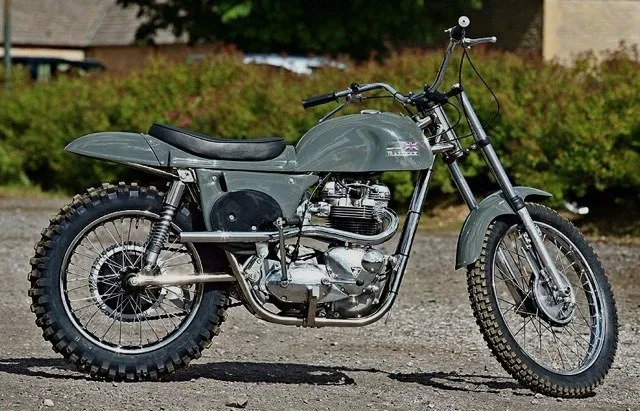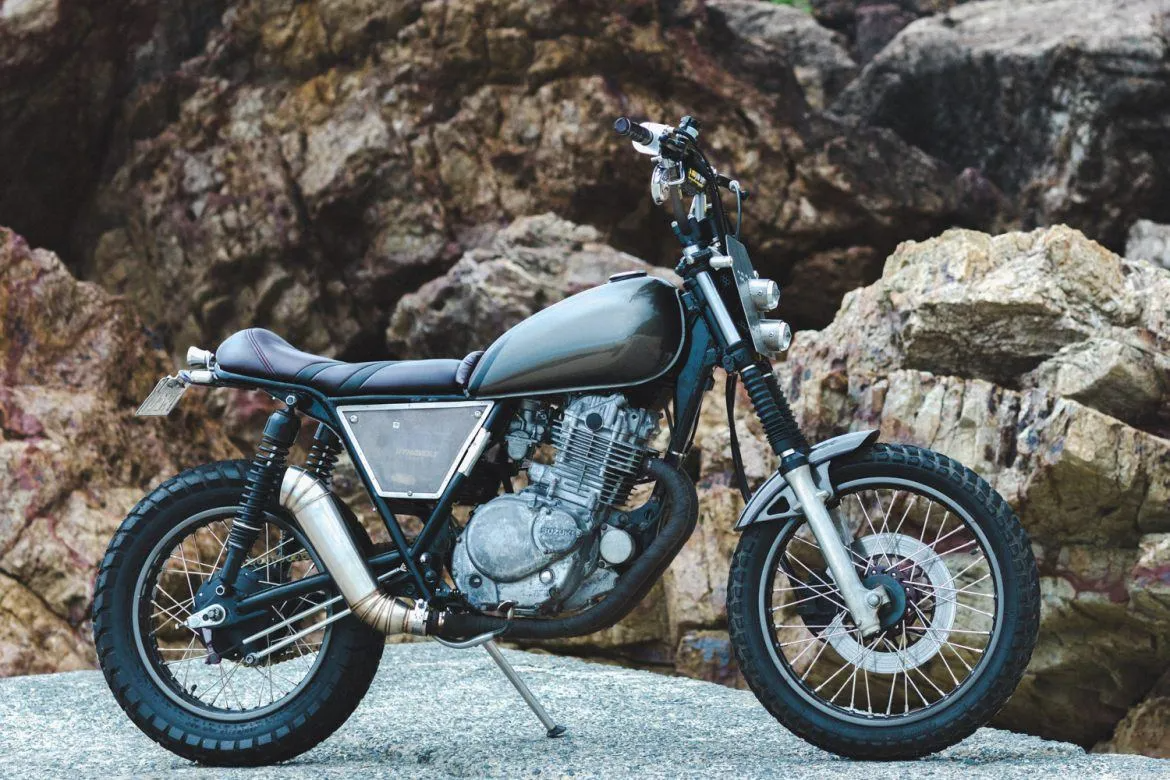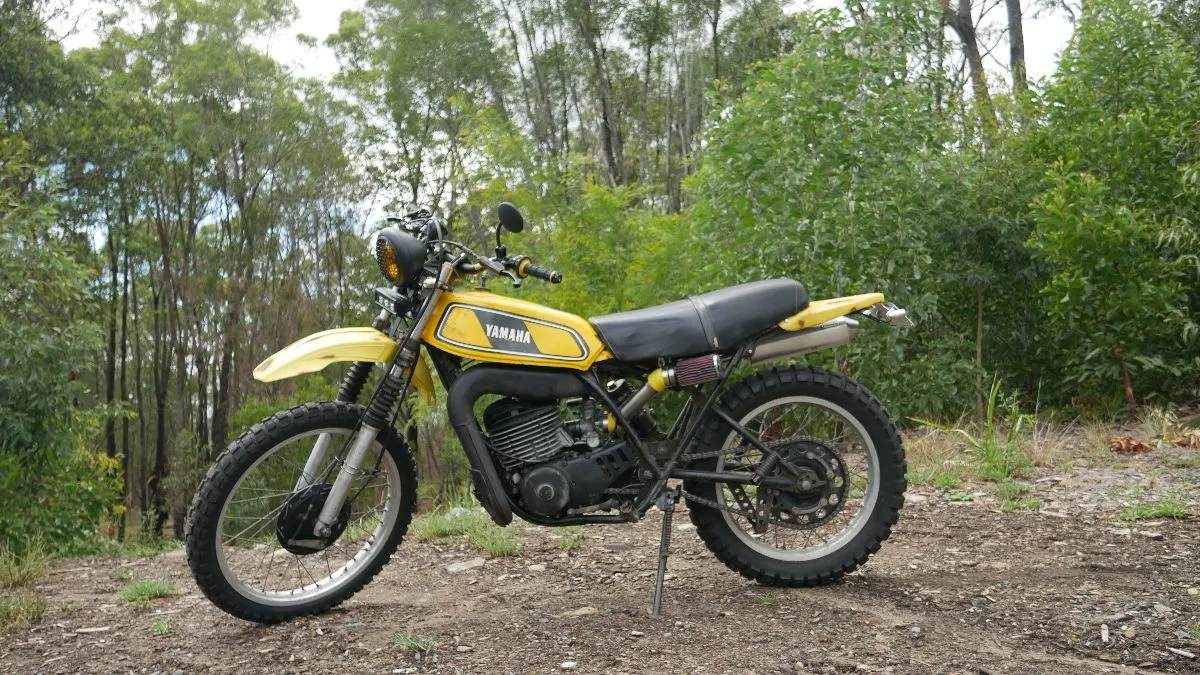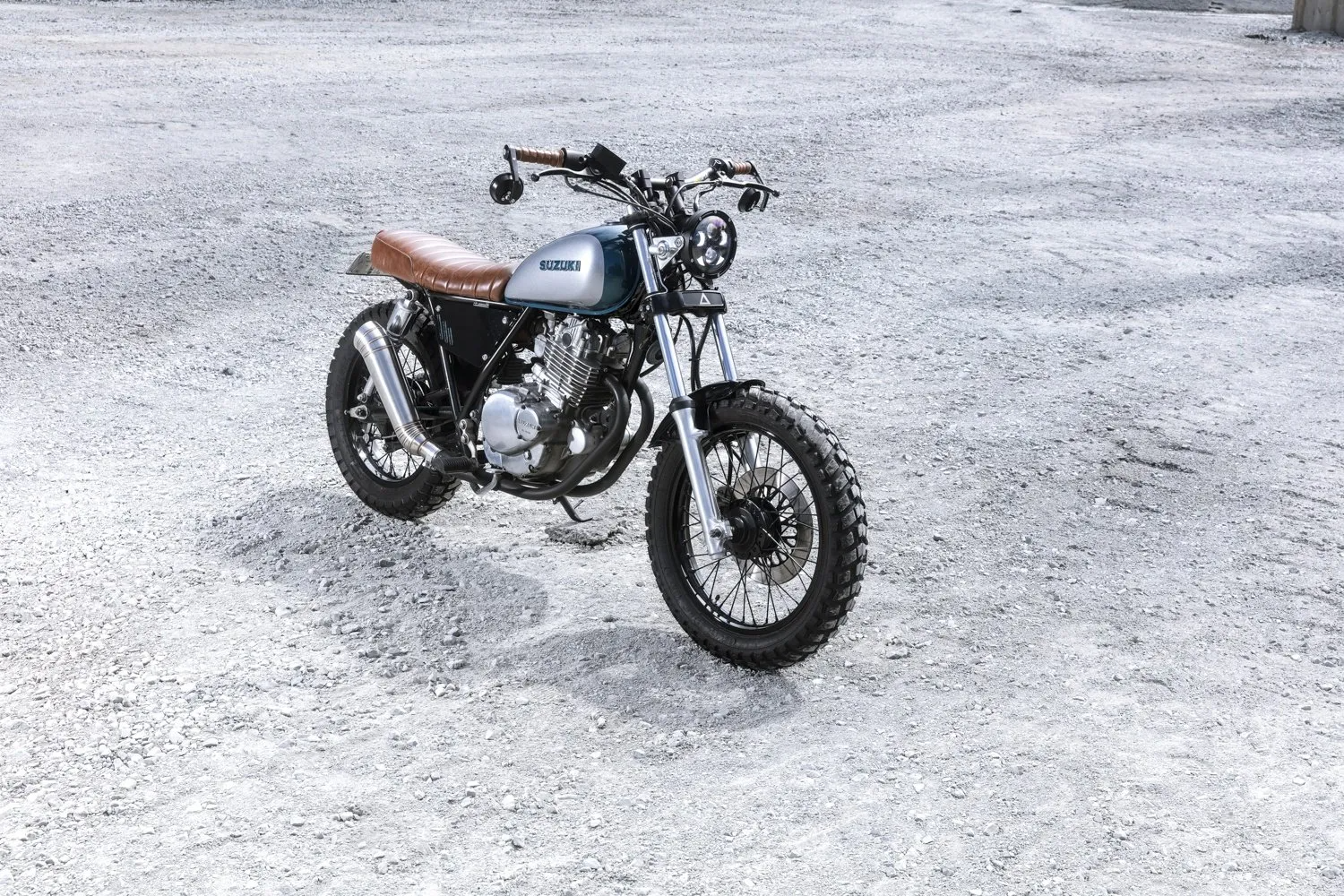Old Bikes…. Everybody loves them, they are outdated, rattly, and perform pretty horribly in comparison to modern motorcycles. Why is it so that you can’t get enough of them? PERSONALITY is the word. They have history, a story and their own little ticks that you grow to love. As things go I’ve had a run of Scrambler bikes come through the garage recently which got me thinking on just how these bikes came about and why. Previously to this, I was seeing a huge surge in heavy road bikes having the tyres swapped out for Knobbys, a set of tracker bars slapped on and branded a Scrambler. I won’t claim to have ever built the perfect off-road machine, but jeez you gotta at least try. So I wanted to take a look at what makes a good scrambler and more importantly why that is. Purpose is the center of our universe after all. Last chance, if alternatively, you’re looking for a cafe racer, check out our cafe racer parts guide here.
Back in 19-Dickety-3 some mad Brit racers took their road bikes into a paddock and started racing time trails with a start and end point and no real track. They Became known as “Scrambles”. The shortest distance might have been the toughest terrain but, if you could handle it, you won. As you would imagine these guys quickly realized that their road bikes were no good and needed some modification, the industry eventually reacted with Knobby tyres and the release of enduro style bikes. Better ground clearance, more suspension travel, and the thinner more padded seat/tank section. These enduro bikes evolved into what you see today tearing Supercross tracks apart.
Check out this Video of some 60’s British racing gold. CLICK HERE
So what are the targets you should be aiming to hit if you’re looking to Build a scrambler? As always you should take your queues from bikes built by those who know best (Manufacturers + Racers), Old Enduro and VMX bikes as well as your modern Motocrosser’s. NOT GOOGLE SEARCH “bike model scrambler”.

From the beginning, the off roader’s wanted a lighter handling bike, well balanced with good bottom end and ground clearance. It seems this has some how to become a little lost, so here are some check points to work towards listed in order of my personal opinion of importance:
- Single or Twin cylinder small to mid capacity engines; This is more about weight than power, you don’t really need 1000cc’s on a dirt track. Four 4 cylinder engines just add weight on the front end you’ll instantly regret as soon as you hit a soft corner.
- Good suspension; Fork and rear shock swaps are doable but costly. If you can find a bike that has decent suspension as standard your streets ahead. If it’s an older bike, don’t bother asking questions, rebuild your forks and replace the rear shocks. I cant stress enough how much a good suspension set up will positively affect your fun in the dirt.
- Ground clearance; some will re-route the exhaust down the side of the engine like old Honda CL’s just make sure you’re thinking about heat shields too. Bash plates can help if you don’t want the high exhaust. This is only really critical if you’re going to get serious off road, in which case you should be looking for an enduro bike anyway.

Purpose Built Moto GN250 Scrambler
- Tyre selection; I see a lot of trials tyres used on smaller bikes, great in photos but wear like butter on the road. Get yourself some good durable dual sport tyres, some I’ve used of note are the Heidenau K60 Scout and the Shinko E805 Big block. Thin on the front wide in the rear, you cant go wrong.
- Wheel size; What Size wheels have MX bikes been running since their birth? 21” front 17-19” rear. There has been teams of people far smarter than me put together to work out the optimal wheel size ratio for off road riding. If you can stick to this philosophy with your bike please do, your forearms will thank you when you hit a dirt track. Larger Diameter front tyres make it easier to navigate tough terrain and give you more control in sticky situations. If 21” is too large I’d urge you to go as large as you can and stay relatively thin on the width. Going a little smaller and wide on the rear comes down to traction and torque.

- Handlebar and seating position; Having good ergonomics is crucial to good off road riding, you want grippy mid-set pegs, a nice high seated position and a good handlebar height. I grew up on dirt bikes so love the feel of Pro-Taper bars, but Renthals or the cheaper brands have much the same height, spread and rake ratios. You don’t want a super short seat/long tank combo on these either, they look great ok, but if you need to get up on the tank or put your weight over the back wheel you won’t be having fun with that set up. Keep this in mind if you’re making your own seat and/or swapping the tank. You can learn about making your own seat by CLICKING HERE
- Good Torque and bottom end; Unless the gearing has been altered from stock, chances are you’re in pretty good territory already. This will be a trial and error thing until you hit your magic number. You’ll want good road speed but if you’re serious about getting your bike dirty make sure you have that bottom end power you need on hills or sticky tracks.
- Minimal controls, gauges and Lighting: This is more about staying true to the Lightweight minimal aesthetic. Historically scramblers had minimal if any lighting and gauges, but if you’re going to be hitting the streets you need them. Keep it discreet, simple and bad-ass.


Purpose Built Moto Suzuki GN250 Scrambler
This should set you well on your way with getting yourself a capable road/trail project going. Also worth a mention is your air filter and electrics. Although an air box is ideal for dust and mud if you absolutely want it gone (it’s ok I get it). Get your pod filter up and out of the way of any debris. Check out our range of air filters available on the online store. You can use a number of tactics for doing this, secondary covers, extra piping, full rear fenders the list goes on. Get creative. As for your electrics, the higher the better, heat shrink everything and make use of some quick snap plugs for ripping your lights off in a hurry when you hit the dirt for the weekend.
If you’re looking for a donor bike to start your own project, Check out this list by Bike Brewers.
Remember a Custom Scrambler is what you make it, anything you put into it the return will be multiplied in good times! Just make it your own, do something different and have fun doing it!

If you want some more Scrambler goods, then check out our Scrambler gallery.
Please leave your comments below and thanks for taking the time!
Tom.
WE BUILD BIKES WITH PURPOSE.
Purpose Built Moto is home for unique custom motorcycle builds. We offer a unique motorcycle customizing experience in the heart of the Gold Coast.





3 kommentarer
Sounds WILD Gazza!
I dismantled 5 2stroke engines that were not complet,everyone of them was a Yamaha,IT 400,DT 400,DT 250 ,YZ 400,RT360 and made a 400cc engine out of them that I worked , I put it in a 250 Yamaha frame all of these are around 1978 age, the frame I made out of many motor bike brands I modified, a expansion chamber 3 times the size it is ment to be out of 8 peices , you sit this bike next to any late model shit for a drag it FUCKING NAiLS IT !!!!!
Hi Tom,
Great article!
I’ve wrote an article about the best base bikes for a scrambler. You can check it out here:
https://bikebrewers.com/best-base-bikes-for-a-scrambler/
Keep on the good work!